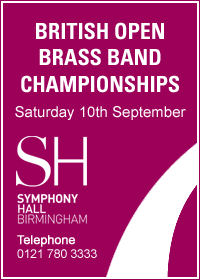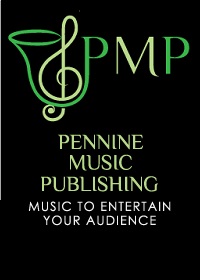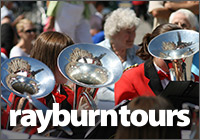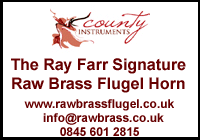2007 English National Championships - Test Piece Review
25-Jun-20074BR has a look at Peter Graham's set work 'On Alderley Edge' and finds that it tells a story of wizards, mythical stones, sleeping armies and even the odd Devil better than JRR Tolkein and JK Rowling put togther.
 ‘On Alderley Edge' is one of those test pieces of recent vintage that has perhaps suffered most by even the short passage of time. Why this is so is hard to fathom out, but since it was used as the set work for the 1997 National Championships of Great Britain it has faded from the contesting radar.
‘On Alderley Edge' is one of those test pieces of recent vintage that has perhaps suffered most by even the short passage of time. Why this is so is hard to fathom out, but since it was used as the set work for the 1997 National Championships of Great Britain it has faded from the contesting radar.
A decade later it suddenly resurfaces and will come as a welcome resurrection to those who have possibly placed it at the back of their minds.
Graham himself describes it as follows:
"The North Cheshire village of Alderley Edge is dominated by a 600 foot wooded escarpment (known locally as the Edge) where evocatively titled landmarks such as ‘Wizard's Well', ‘Stormy Point' and the ‘Devil's Grave' have inspired storytellers for centuries.
The work represents a musical portrayal of many of these sites and also recalls some of the legends which have arisen from them. In dealing with the subjects of the forest, myths and folklore, parallels with the German Romantic Opera tradition became apparent to me and it seemed appropriate to draw upon sources and in some cases the language of that particular period in music history.
Hence the references to Weber's masterpiece ‘Der Freischutz' and the idea of a redemption theme and the triumph of good over evil. The latter notion also has a resonance with the brass band test piece tradition of Percy Fletcher, Cyril Jenkins et al. It is perhaps doubly fitting, as we approach the Millennium, for a nostalgic reminder of both the ethos and style of this period in the development of the brass band repertoire.
The music itself could be considered to be a series of tine pictures. The ‘Armada Beacon' (the highest point on the Edge from where the advance of the Spanish Armada was signalled) presents some musical fireworks with a Spanish twist. The timeless nature of the ancient ‘Golden Stone' (reputed to have mythical properties) is evoked by a chaconne while the machine like drive of the ‘Engine Vein Mine' is represented by a meccanico section. ‘The Holy Well' is outlined by the redemption theme (a pastiche aria) while in ‘Stormy Point' fragments of ‘Dies Irae' can be hearfd against the brooding storm music. ‘The Devil's Grave' (making reference to the Wolf's Glen scene from ‘Der Freischutz') completes the core of the work which is framed by a ‘Prologue' and ‘Epilogue'.
'The Prologue' sets the forest scene in the off stage horn call which also makes reference to the most enduring of the legends of Alderley Edge. A subterranean cavern is said to house a sleeping army who will rise if ever the country is in peril. Entrance to the cavern is by the way of iron gates which are hidden in the landscape. Locals have their own ideas of the whereabouts of the gates and it is said that music (the horn call) from the cavern can still be heard at nights. In true local tradition I have signposted the entrance with a melody woven into the fabric of one of the landmarks. The mystery continues!"
There you have it then – and fully explained in all its glory too. Interestingly there are the faint beginnings here of the composer's interest in the fantastic tales of Jules Verne and what of course became ‘Journey to the Centre of the Earth' nearly a decade later. The mechanical precision which he also eludes too is in many ways the kernel of the idea further explored in his ‘Harrison's Dream'.
The descriptive writing is open and accessible to the ear, cleverly constructed (the ‘signpost theme' can be detected if you do your homework) and does deliberately venture into the realms of pastiche. There is a sense of nostalgia about much of the work too – and the architecture of the work does resonate with the composers he mentions. It is not hard to detect the influences of Weber's ‘Der Freischutz' and even nods and winks to the style of Percy Fletcher in particular.
The lyrical writing is of course wonderfully warm and emotional, although not too sugar coated to make it artificially sweet and sickly, and the sense of darker forces and possible menace are always bubbling under the surface much like the ‘sleeping army' he describes.
There is of course a need for bands to posses top class soloists – a tenor horn with nerves of steel and a soprano with appendages the size of a Grand National winner to name but two, but there is a need also for the ensemble as a whole to be balanced, compact and secure from the word go.
If the piece does have a weakness (and perhaps explains its almost immediate disappearance after the 1997 contest) is that it was written around the same time as the tour de force works became de rigeur for the very top bands to use as own choice selections at the Europeans in particular. Its nostalgic sense of style, lightness of touch and pastiche nature don't immediately stand it out as a piece that can bring the house down – a pity as it contains so much that can show a top class band off in a quite brilliant light.
Perhaps in 1997 the bands were not ready quite yet for musical tales of daring do, wizards, Devil's, slumbering armies and good triumphing over evil – or was it that no one had yet got to grips with Harry Potter or Lord of the Rings?
Now they do and now they should enjoy a fine work for brass band even more. ‘On Alderley Edge' is a series of good musical stories told just as well as any JK Rowling or JRR Tolkein could manage.















